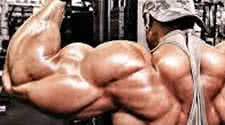Blood Volume Training - Different Variations of Weight Training

Making the right training decisions results in progress
A common question that we are faced with here at fitFLEX relates to the various different types of weight training and bodybuilding plans. A popular suggestion from the community is blood volume training? What exactly is this
type of weight training and can it help one get bigger or improve their strength?
Blood volume training has come under a variety of different names, but the basic premise behind it is doing very high-rep training in an effort to increase capillary density within a muscle. What's the big deal with capillary
density? Well, capillaries are very small blood vessels that play a vital role in nutrient delivery to the muscle. Oxygen, amino acids, fats, glucose, and a host of other things can be transferred by way of capillaries.
Capillary density is a term which describes one's capillary-to-muscle-fiber ratio. It makes sense that the more capillaries you have within a muscle, the better the ability to deliver various nutrients. The more well-fed a
muscle, the greater the growth potential. However, an increase in the size of your muscles without a corresponding increase in capillary number decreases capillary density, and therefore, decreases your body's ability to
deliver nutrients. This is where the high-rep/endurance-type training comes in.
It's pretty well-established that endurance training can increase capillary density. From the resultant increase in capillary density, you'll notice improved recovery in the trained muscle, better endurance, and even some new
growth. However, a word of caution: Exclusive use of high-rep training can result in a considerable decrease in Type lib fiber characteristics - those with the greatest potential for increased size and strength. Having said
that, the wisest practice would probably be to include very heavy low-rep training in conjunction with endurance training. Perhaps begin your workout with heavy compound work and finish your workout off with very high-rep
(50+ reps) isolation work. Another option would be to perform a few sets of high-rep isolation work for a given muscle on days that you're not going heavy on that particular muscle group.